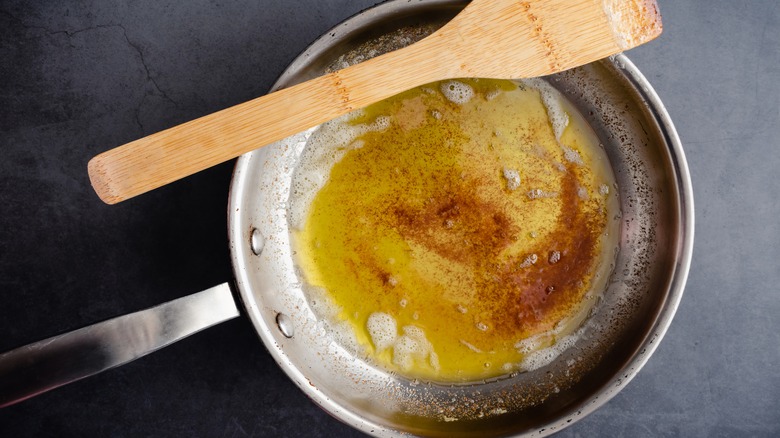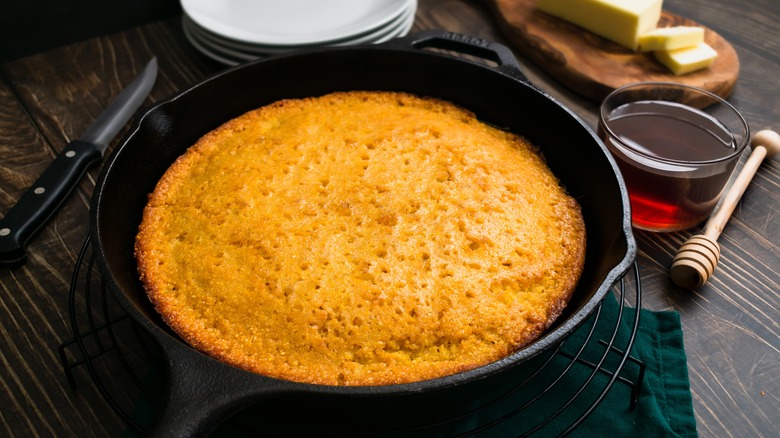The Color Of Your Pan Matters For Brown Butter, According To Alton Brown
Alton Brown knows brown butter. As a frequently-used ingredient in his recipes (and even the secret to his toasty hot chocolate), the famous cook turns to brown butter consistently and has found the best ways to work with it. As such, he has one big piece of advice for home bakers when it comes to browning butter: the color of your pan matters.
As the chef explains in an episode of his cooking series Pantry Raid, making this signature ingredient is all about browning the sugars and milk proteins to develop a deeper flavor. You can technically do this in any kind of pan you want, but a lighter hued one is best as you need to be able to actually see the butter transition from yellow to brown in order to know when it's done.
If you use a dark-colored pan — like a wok, a copper frying pan, or a cast iron pan — it'll be difficult to see the process unfold, and you'll risk burning it all. If you only have dark pans, in this case, make sure to grab a lighter-colored utensil or tool (like a spoon) to check the butter so you can get a good look at it.
The best way to brown butter
To achieve perfectly brown butter, with that delicious, nutty flavor, use Alton Brown's tip and start with a light-colored pan like white ceramic, stainless steel, or something with a silver finish. It can be a saucepan, a frying pan, or any other shaped pan, as long as you can see the butter clearly inside it. Start to melt the butter over medium heat, swirling or stirring every so often as it slowly starts to foam and froth.
After five minutes or so, the milk solids and sugars in the butter will begin to darken. You'll want to keep cooking the butter long enough until it's a deep brown so it develops the desired flavor, but not too long that it becomes bitter or burnt. The biggest indicator of perfectly brown butter will be its aroma; it will start to smell deliciously nutty and almost caramel-like. Once it's brown enough, remove from the heat (and the pan) immediately to prevent it from cooking any longer.
Ways to use brown butter in countless dishes
The beauty of brown butter is that you can use it in almost any recipe that calls for butter (whether melted or chilled); you'll simply be replacing the typically milky, slightly sweet flavor with a more intense, richer, nuttier note. And, because brown butter adds so much depth of flavor, it can work wonderfully in both sweet and savory dishes.
For savory recipes, the nuttiness and richness of brown butter works great in pasta sauces, like a brown butter sage sauce for gnocchi or ravioli, or in pan sauces for various meats and fish. You can also use it to cook eggs or dress roasted vegetables, incorporate it into dishes like cornbread and mashed sweet potatoes, or drizzle it over popcorn, cooked grains, and soup.
For sweet recipes, brown butter pairs lovely with anything from nuts to chocolate to fruit to brown sugar. Try it in baked goods like banana bread and coffee cake, cookies like chocolate chip and oatmeal, or bars like blondies and brownies. You can also use it in a buttercream frosting or glaze for added flavor, or even use it in your pie crust.



